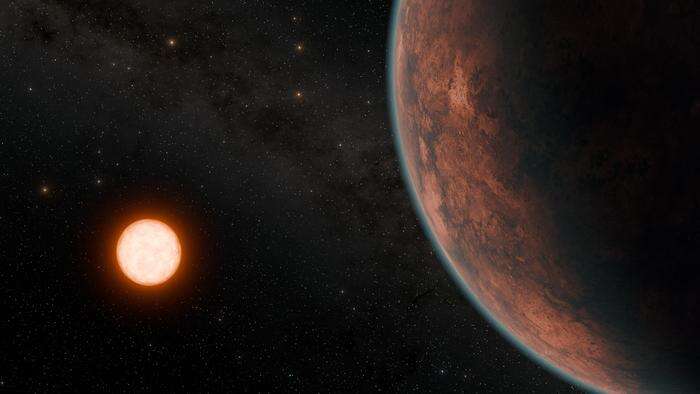FINDING a planet that can host life like Earth does is like trying to find a grain of sand in an infinitely expanding haystack.
And yet, despite the odds, astronomers may have just found a new, habitable world.


Roughly 40 light-years away, astronomers have discovered a rare planet with Earth-like temperatures.
It's a world with an eternal summer, where temperatures average 42°C (107°F).
It orbits its version of the sun - a cool, red dwarf - every 12.8 days.
 Charming UK village is 'UFO hotspot' with 'NASA scientists showing interest'
Charming UK village is 'UFO hotspot' with 'NASA scientists showing interest'
Experts from Nasa, the European Space Agency and several universities, including Warwick and Edinburgh worked on discovery.
It's not yet clear if the planet, dubbed Gliese 12b, shares an Earth-like atmosphere.
But astronomers reckon its a good candidate for Nasa's $10billion James Webb Space Telescope to investigate further.
One of the main uses of the James Webb Telescope is to study the atmosphere of exoplanets.
"Thrillingly, this planet is the closest Earth-sized and temperature planet we know," Warwick astrophysicist Dr Thomas Wilson told the BBC.
"The light we are seeing now is from 1984 (40 years ago) – that’s how long it has taken to reach us here on Earth.
"Planets like Gliese 12 b are very few and far between, so for us to be able to examine one this closely and learn about its atmosphere and temperature is very rare."
Experts have dubbed it an "exo-Venus".
We know of only a handful of temperate planets similar to Earth that are both close enough to us and meet other criteria needed for this kind of study
Michael McElwain, a research astrophysicist at Nasa's Goddard Space Flight Centre
Once upon a time when Earth and Venus had similar empty atmospheres that were replenished by volcanic gasses and material from our solar system.
 Astronomer leads hunt for Northern Lights 'sound' rarely heard in the aurora
Astronomer leads hunt for Northern Lights 'sound' rarely heard in the aurora
But what made Earth habitable was the existence of water.
While it's not the first Earth-like exoplanet to have been discovered, Nasa reckons it is one of a small number of worlds like it.
"We know of only a handful of temperate planets similar to Earth that are both close enough to us and meet other criteria needed for this kind of study, called transmission spectroscopy, using current facilities," Michael McElwain, a research astrophysicist at Nasa's Goddard Space Flight Centre, said.
"To better understand the diversity of atmospheres and evolutionary outcomes for these planets, we need more examples like Gliese 12 b."
It's about the same distance away from Earth as TRAPPIST-1, the largest system of Earth-sizes exoplanets ever discovered.



































